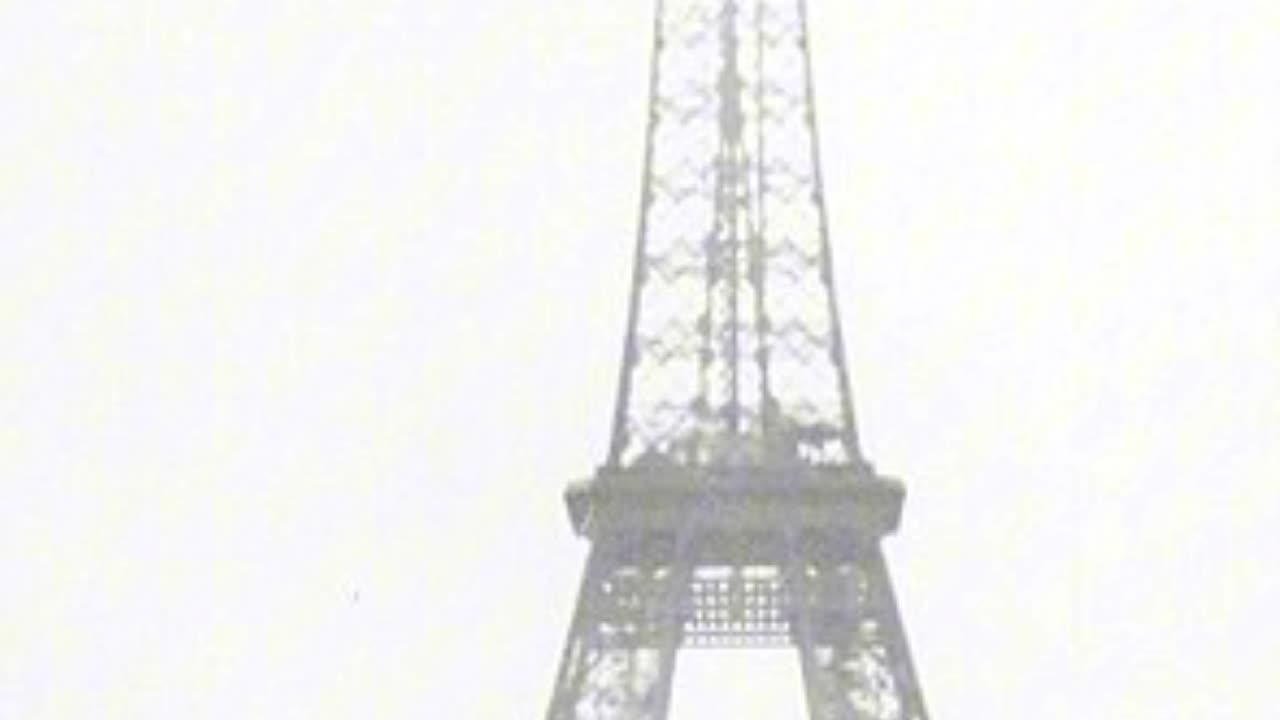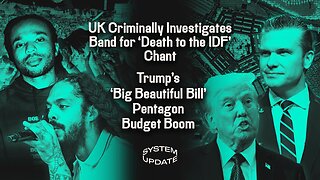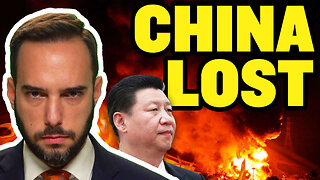Premium Only Content

Hitler's Speech February 17, 1939
Background Leading Up to Hitler's Speech at the International Automobile and Motorcycle Exhibition
Pre-War Germany: By February 1939, Germany was under the totalitarian rule of Adolf Hitler, who had been in power for six years. The country had undergone significant military and economic expansion, and tensions in Europe were escalating.
Economic Policies: Hitler's economic policies had focused on reducing unemployment through large public works projects, rearmament, and autarky. These efforts led to significant industrial growth and increased national pride.
Automotive Industry: The automotive industry was a crucial component of Germany’s economic revival. The Nazis promoted car manufacturing as a symbol of modernity and progress, and companies like Volkswagen (originally the “People's Car” project) became iconic representations of this progress.
International Tensions: The annexation of Austria and the Sudetenland had already taken place, and the Nazi regime was preparing for further territorial expansion. The world watched as Hitler's aggressive foreign policy threatened the stability of Europe.
Hitler's Speech at the Opening of the International Automobile and Motorcycle Exhibition – February 17, 1939
On February 17, 1939, Adolf Hitler delivered a speech at the opening of the International Automobile and Motorcycle Exhibition in Berlin. This speech highlighted the importance of the automotive industry to Nazi Germany’s vision of progress and power.
Key Points of Hitler's Speech:
Importance of the Automotive Industry: Hitler began by emphasizing the significance of the automotive industry in Germany’s economic revival. He praised the industry for its role in reducing unemployment, advancing technology, and contributing to national strength.
Symbol of Modernity: He portrayed automobiles and motorcycles as symbols of modernity and progress. Hitler stressed that the advancements in this sector reflected Germany’s technological prowess and innovation, aligning with the Nazi vision of a modern, powerful state.
Economic Achievements: Hitler highlighted the economic achievements under Nazi rule, crediting the regime’s policies for the revival and expansion of the automotive industry. He argued that state intervention and support had been crucial in transforming Germany’s economy.
Public Works and Infrastructure: The speech included praise for the extensive public works projects undertaken by the Nazi government, such as the construction of the Autobahn. Hitler linked these infrastructure developments to the growth of the automotive industry, suggesting that they facilitated economic and social progress.
National Pride and Unity: A key theme was the promotion of national pride and unity. Hitler asserted that the successes of the automotive industry were a testament to the ingenuity and hard work of the German people. He called for continued dedication to the nation’s collective goals.
Future Vision: Hitler outlined his vision for the future, expressing confidence in further advancements in the automotive industry. He projected a future where Germany would continue to lead in automotive innovation and production, contributing to the nation’s overall greatness.
Military Implications: While the speech primarily focused on the economic and technological aspects, there were implicit references to the military applications of automotive advancements. The emphasis on strength and progress suggested that these developments were also intended to bolster Germany’s military capabilities.
Analysis:
Hitler’s speech at the International Automobile and Motorcycle Exhibition was a strategic effort to underscore the achievements of Nazi Germany and to rally support for the regime’s vision of progress and power.
Promotion of Technological Prowess: By highlighting the automotive industry’s advancements, Hitler aimed to promote Germany’s technological prowess. This focus on innovation was intended to bolster national pride and to present the Nazi regime as a forward-looking, modernizing force.
Economic Propaganda: The speech served as economic propaganda, showcasing the successes of Nazi economic policies. By attributing the growth of the automotive industry to state intervention, Hitler sought to legitimize his regime’s economic strategies and to reinforce public support.
National Unity and Pride: The emphasis on national pride and unity was a recurring theme in Hitler’s speeches. By celebrating the achievements of the automotive industry, he aimed to foster a sense of collective accomplishment and to unify the German people around the regime’s goals.
Public Works as Symbolic Projects: The reference to public works projects like the Autobahn linked the regime’s infrastructure achievements to the broader narrative of progress and modernization. These projects were symbolic of the regime’s ability to deliver tangible benefits to the population.
Implicit Military Preparation: While not explicitly stated, the speech’s emphasis on strength and progress had implicit military implications. The advancements in the automotive industry were also seen as contributing to Germany’s rearmament and military readiness.
Overall, Hitler’s speech on February 17, 1939, at the International Automobile and Motorcycle Exhibition was a calculated effort to highlight the successes of the Nazi regime and to promote the automotive industry as a symbol of Germany’s technological and economic revival. By celebrating the achievements in this sector, Hitler aimed to reinforce national pride, unity, and support for the regime’s vision of a powerful, modern Germany. This speech was part of the broader Nazi strategy to use economic achievements and technological progress as tools for political consolidation and military preparation.
-
 LIVE
LIVE
SpartakusLIVE
3 hours ago#1 BIG RAT plays for BIG CHEESE || Duos w/ @GloryJean, Quads LATER
517 watching -
 1:20:42
1:20:42
Anthony Pompliano
5 hours ago $0.56 earnedCZ's Story: From No Electricity to Bitcoin Billionaire
23.8K2 -
 1:30:10
1:30:10
Glenn Greenwald
4 hours agoUK Criminally Investigates Band for 'Death to the IDF' Chant; Trump's 'Big Beautiful Bill' Pentagon Budget Boom | SYSTEM UPDATE #479
170K70 -
 UPCOMING
UPCOMING
We Like Shooting
13 hours agoWe Like Shooting 617 (Gun Podcast)
195 -
 LIVE
LIVE
PudgeTV
4 hours ago🔵 Mod Mondays Ep 67 | This is the Ray Gaming on Rumble | A Community Story
246 watching -
 LIVE
LIVE
GloryJean
2 hours agoNight Session w/ Spartakus & Squads Later, TUNE IN 🔥
156 watching -
 4:05
4:05
Blackstone Griddles
1 day agoBacon Ranch Pasta Salad on the Blackstone Griddle
17.8K2 -
 LIVE
LIVE
Spartan
5 hours agoPro Halo Player | Grinding, Another day to try and get better
63 watching -
 6:41
6:41
China Uncensored
3 hours agoIran Is a DISASTER for China
18.3K6 -
 LIVE
LIVE
megimu32
1 hour agoOTS: LuluLawsuits & Reality TV Chaos - Costco, Comebacks & The Reality Boom
224 watching